Therapeutic Technology
Our hospital provides such leading-edge technology – as well as therapists trained to use it best – to ensure our patients are positioned to recover as quickly as possible.
Innovative Solutions for Superior Outcomes
New technology continues to push the boundaries of what once was considered full recovery from certain injuries or conditions. Today, for instance, top inpatient rehabilitation facilities deploy robotic tools that give stroke patients the ability to use their upper extremities again or help spinal cord injury patients with early ambulation.
Our hospital provides such leading-edge technology – as well as therapists trained to use it best – to ensure our patients are positioned to recover as quickly as possible.
Here are some examples of some of the industry’s best technology deployed at our hospital:
TecnoBody® Isofree
The TecnoBody® Isofree system was designed to treat anyone looking to improve balance, stability, and functional mobility. It addresses a wide variety of pathologies and is a good tool to use in conjunction with traditional therapeutic interventions. TecnoBody Isofree allows for enhancing kinesthetic and proprioceptive awareness during functional tasks as well as working on improving reflex mechanisms that play a role in maintaining balance and decreasing the risk of falls. All of this is facilitated via biofeedback that is provided throughout the activity by the interconnected sensor platform and 3D camera.
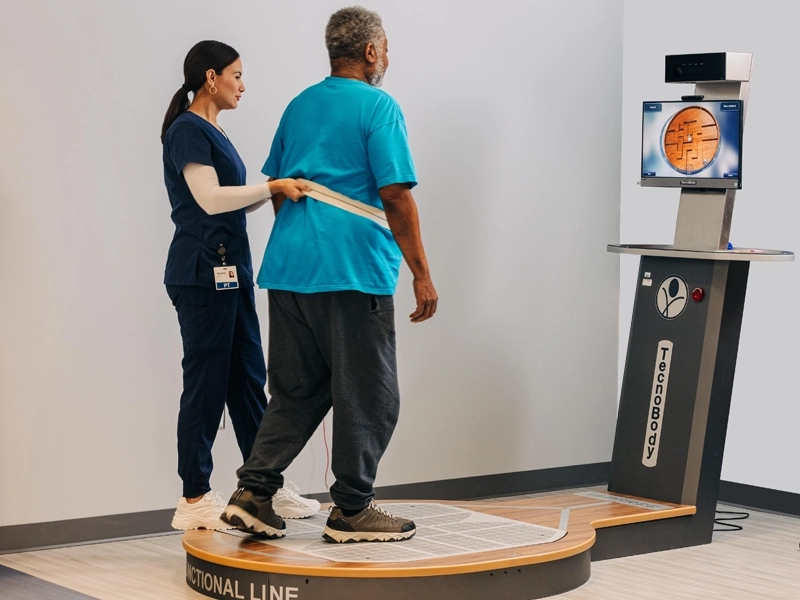
Smart Car
Our Smart Car is fully integrated into our rehab gym, allowing our patients to learn and practice car transfer skills year-round at any time during a treatment session. Car transfer training activities are essential to prepare our patients for community reintegration and setting them up for success when getting back to their daily activities.
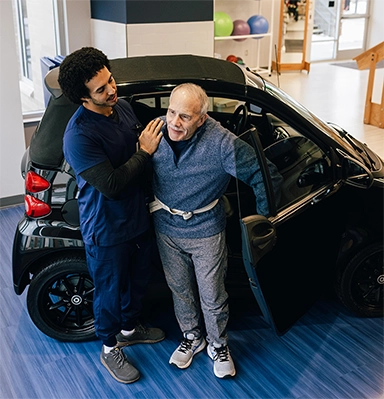
LiteGait®
LiteGait® is a body-weight support system and gait training device that provides a safe environment for patients to participate in gait training over a treadmill or over the ground. This system allows patients to begin gait training earlier in the rehabilitation process and at a lower level than would be feasible with any other assistive device available. The LiteGait system eliminates the fear of falling and/or loss of balance with standing and walking tasks and allows the therapist the ability to provide manual assistance to the legs and pelvis throughout the gait cycle to facilitate proper gait patterns.
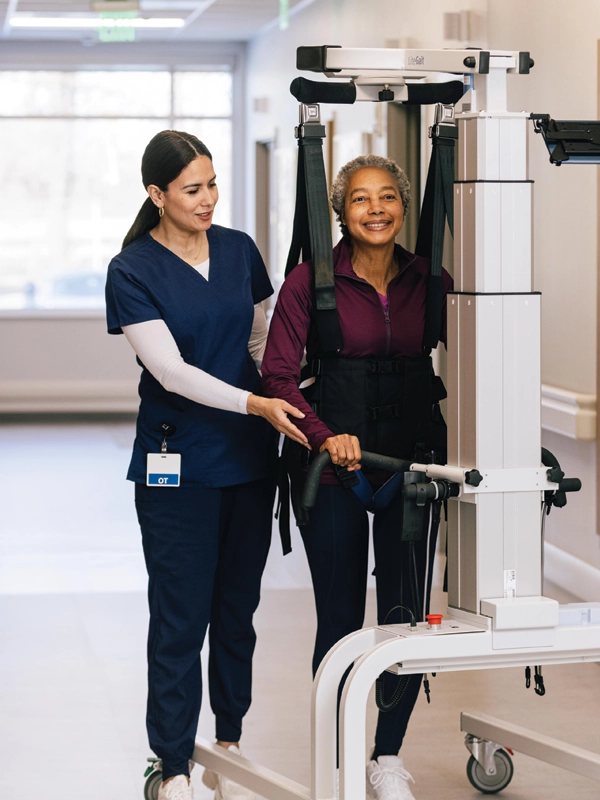
Overhead Body Weight Support System
Our overhead body weight support system provides dynamic body weight support while patients practice walking, balance tasks, sit-to-stand transfers, open and closed-chain strengthening exercises, and even steps. This system is mounted to an overhead track, allowing for use within the parallel bars or outside of the bars when introducing an assistive device during gait training progression. The body weight support system provides a safe environment for patients to begin standing, transfer, and gait training.
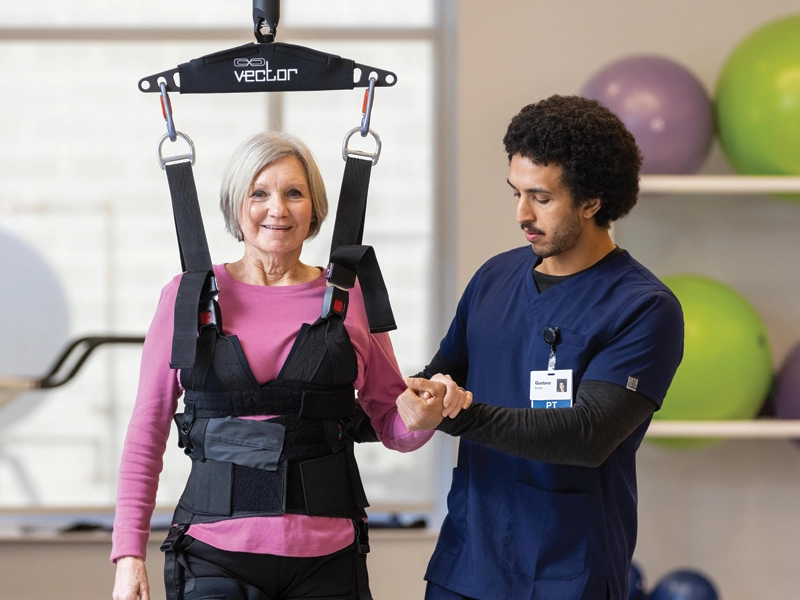
SaeboMAS
The SaeboMAS is a zero-gravity upper extremity device used to facilitate or challenge the weakened shoulder during functional tasks, such as eating or combing your hair. This device is used with patients with neurological and orthopedic conditions resulting in shoulder weakness. The adjustable spring-based tension system offers variable levels of assistance as the patient’s strength improves and makes it easy to track and document progress. It can be used to increase strength, range of motion, and motor control and encourage neuroplasticity by allowing the opportunity for highly repetitive tasks.
InMotion
The BIONIK InMotionARM™ Robot is often used with many patients who suffer from weakness in their upper extremities after a stroke. The ARM Robot helps patients utilize their strength to complete hundreds of repetitions in a fraction of the time of traditional exercise. Repetition is one of the most important factors when considering neuroplasticity and the brain’s ability to repair and relearn movements following a stroke. This evidence-based neurorehabilitation technology quietly monitors the patient’s movements during therapy while gently assisting where needed to help them complete various motor therapy activities.
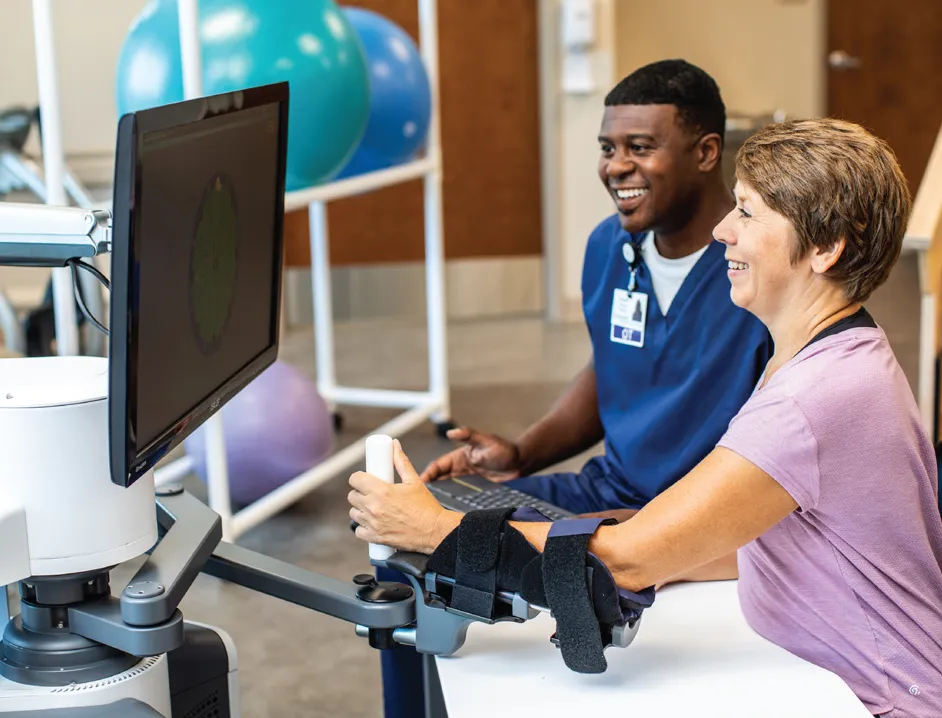
EksoGTTM
The EksoGT™ exoskeletal unit assists patients with early ambulation following a stroke or spinal cord injury. Ekso is a robotic exoskeleton that can be fitted to most patients to allow them to stand and ambulate early in the rehab process, which is key to their long-term prognosis. Clinical evidence indicates that gait training in the Ekso improves patients’ balance, walking distance, and gait speed outside of the device at discharge compared to admission.
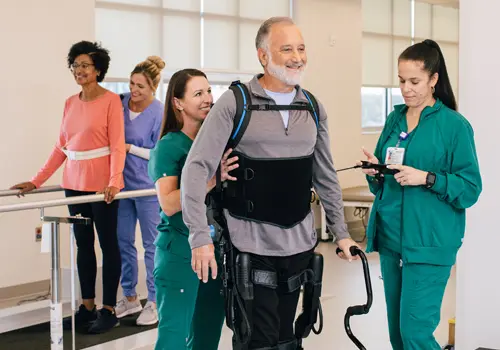
RehabTracker
RehabTracker is a groundbreaking person-centered mobile app that is transforming how our partners engage with patients and their families. Combined with our approach of focusing our care around What Matters to You (the patient), RehabTracker allows patients and their invited loved ones to view their personalized goals, see and track their patient progress in real-time as logged by our therapists, including overall progress toward discharge goals, activities of daily living, distance and transfers, share that progress with invited family and friends, share patient photos during their recovery journey, receive comments from staff and messages of support from loved ones – all from the palm of their hands. Areas of patient progress include self-care activities such as bathing, dressing, and eating, mobility activities including walking, transfers, and bed mobility, speech-language activities including expression and comprehension, memory and problem-solving, and diet/swallowing food and liquid consistencies. Facilities utilizing RehabTracker have experienced greater levels of patient motivation as well as patient and family member engagement and satisfaction.


